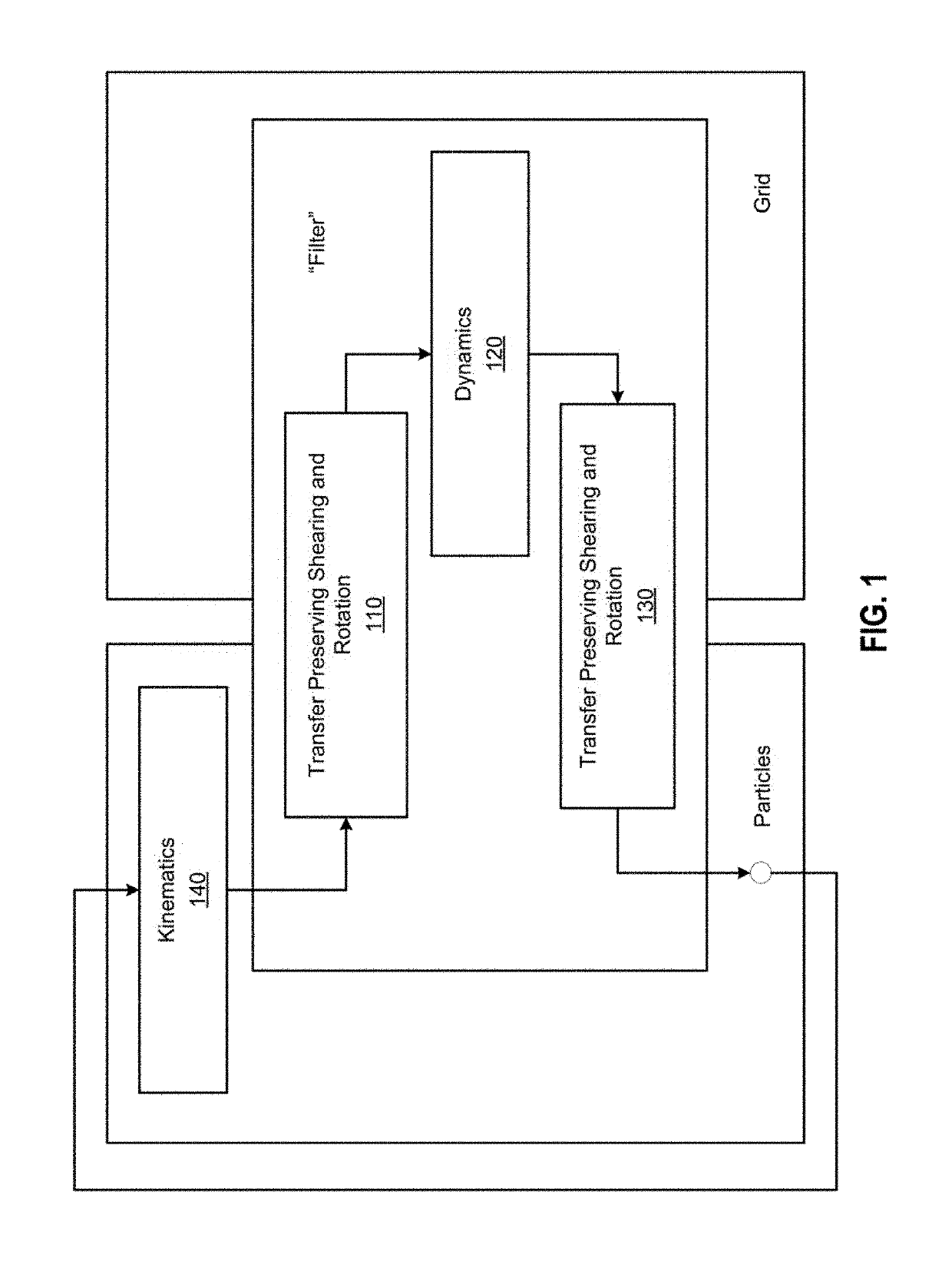Particle-in-cell methods preserving shearing and rotation
a particle-in-cell and cell technology, applied in the field of particle-in-cell methods, can solve the problems of unwanted dissipation of angular momentum, noise and instability, and inherent and well-known limitations of traditional hybrid lagriangian/eulerian methods, and achieve the effect of conserving angular momentum
- Summary
- Abstract
- Description
- Claims
- Application Information
AI Technical Summary
Benefits of technology
Problems solved by technology
Method used
Image
Examples
Embodiment Construction
[0017]This disclosure provides techniques which reduce information loss when transferring from particles to grid and vice versa in a hybrid Lagrangian / Eulerian simulation, while also preserving stability in the simulation. That is, techniques disclosed herein retain the stability of the original particle-in-cell (PIC) method without the dissipation inherent in the PIC method or the noise and instability of the fluid implicit particle (FLIP) method. Traditionally, a single particle receives data from multiple grid points but is forced to reduce those influences to a single constant value, and this leads to loss of information (e.g., dissipation). Two methods are introduced herein to avoid such loss of information. In one aspect, referred to herein as the rigid particle-in-cell (RPIC) method, a simulation application stores a sampling of local angular momentum for each particle, preserving the angular momentum that would otherwise be lost in the transfer from grid to particles. That i...
PUM
 Login to View More
Login to View More Abstract
Description
Claims
Application Information
 Login to View More
Login to View More - R&D
- Intellectual Property
- Life Sciences
- Materials
- Tech Scout
- Unparalleled Data Quality
- Higher Quality Content
- 60% Fewer Hallucinations
Browse by: Latest US Patents, China's latest patents, Technical Efficacy Thesaurus, Application Domain, Technology Topic, Popular Technical Reports.
© 2025 PatSnap. All rights reserved.Legal|Privacy policy|Modern Slavery Act Transparency Statement|Sitemap|About US| Contact US: help@patsnap.com



